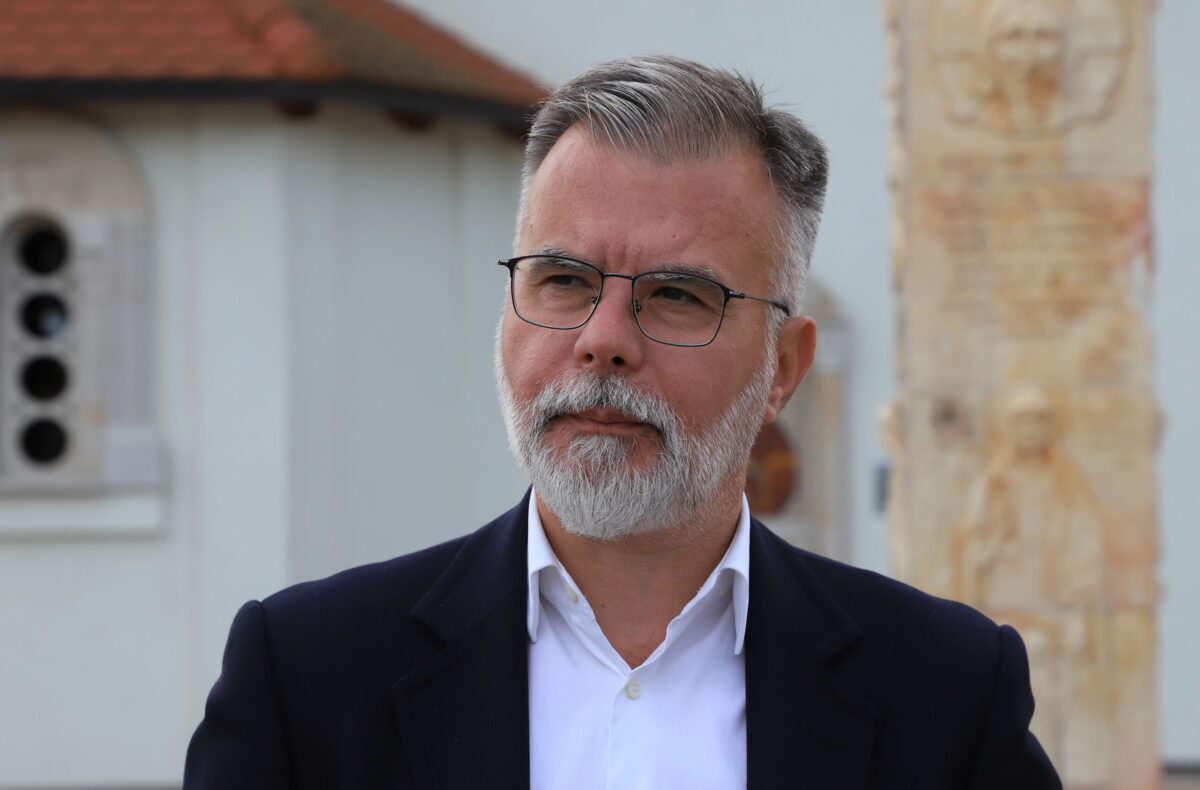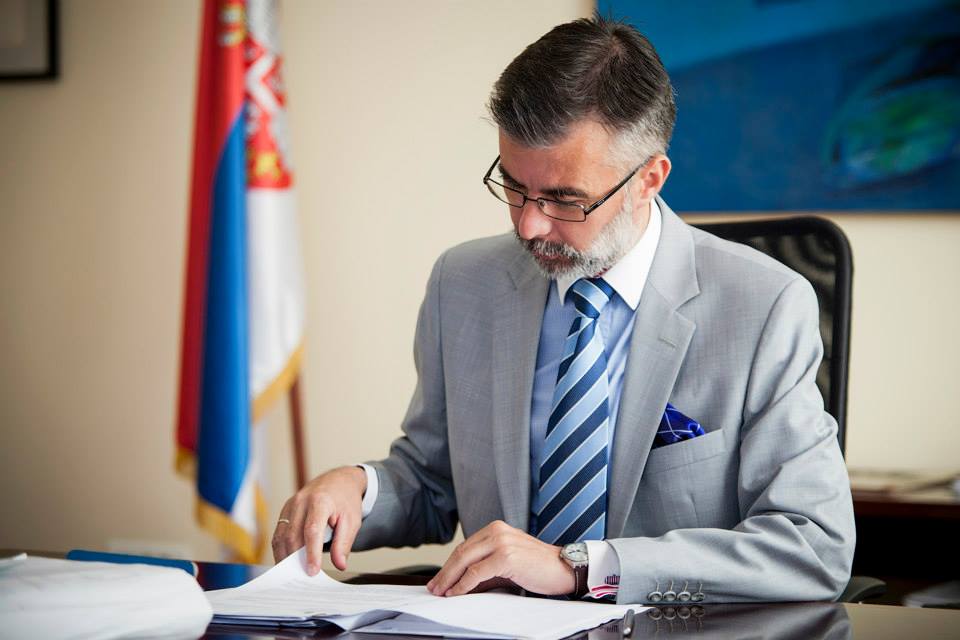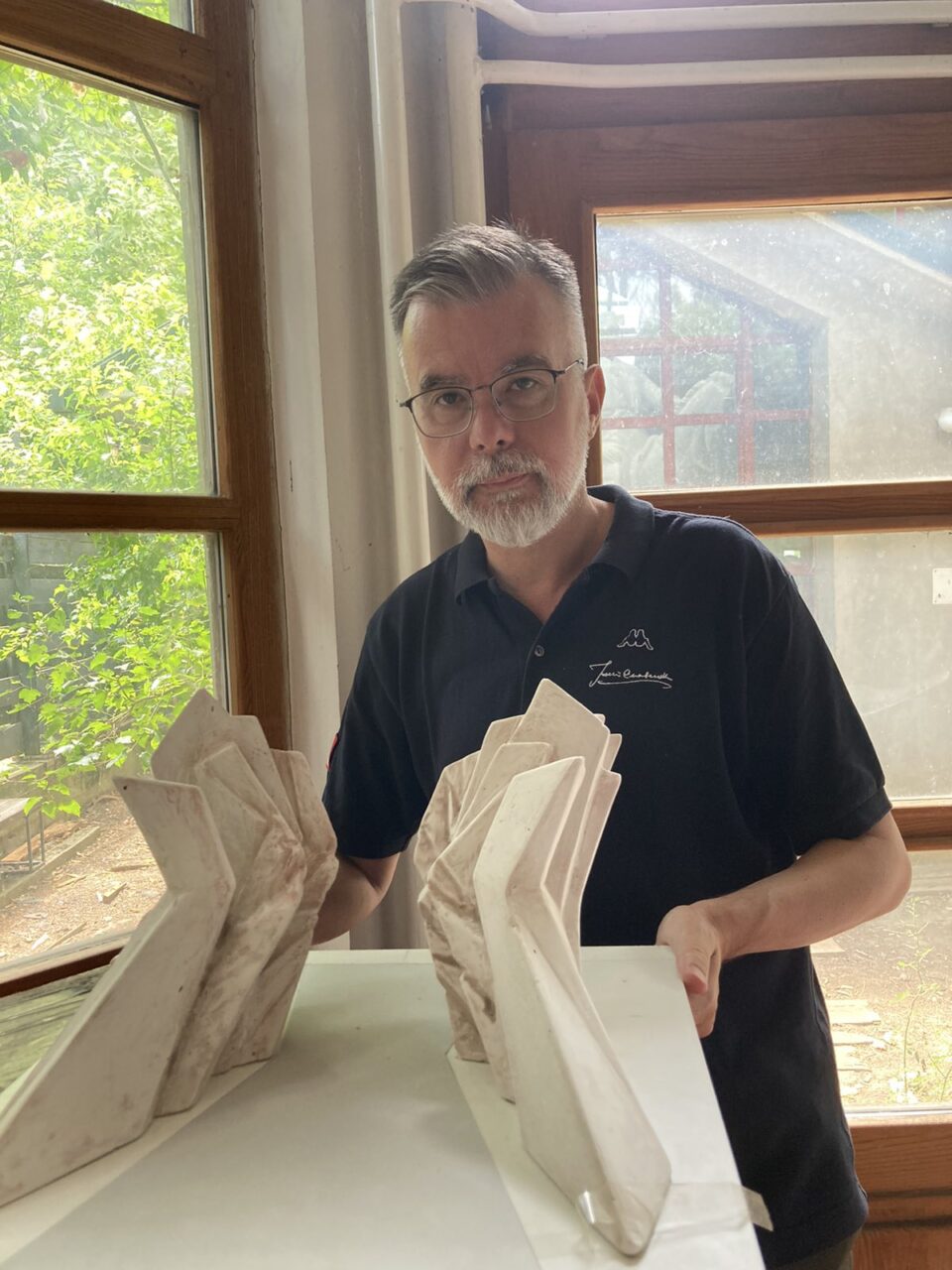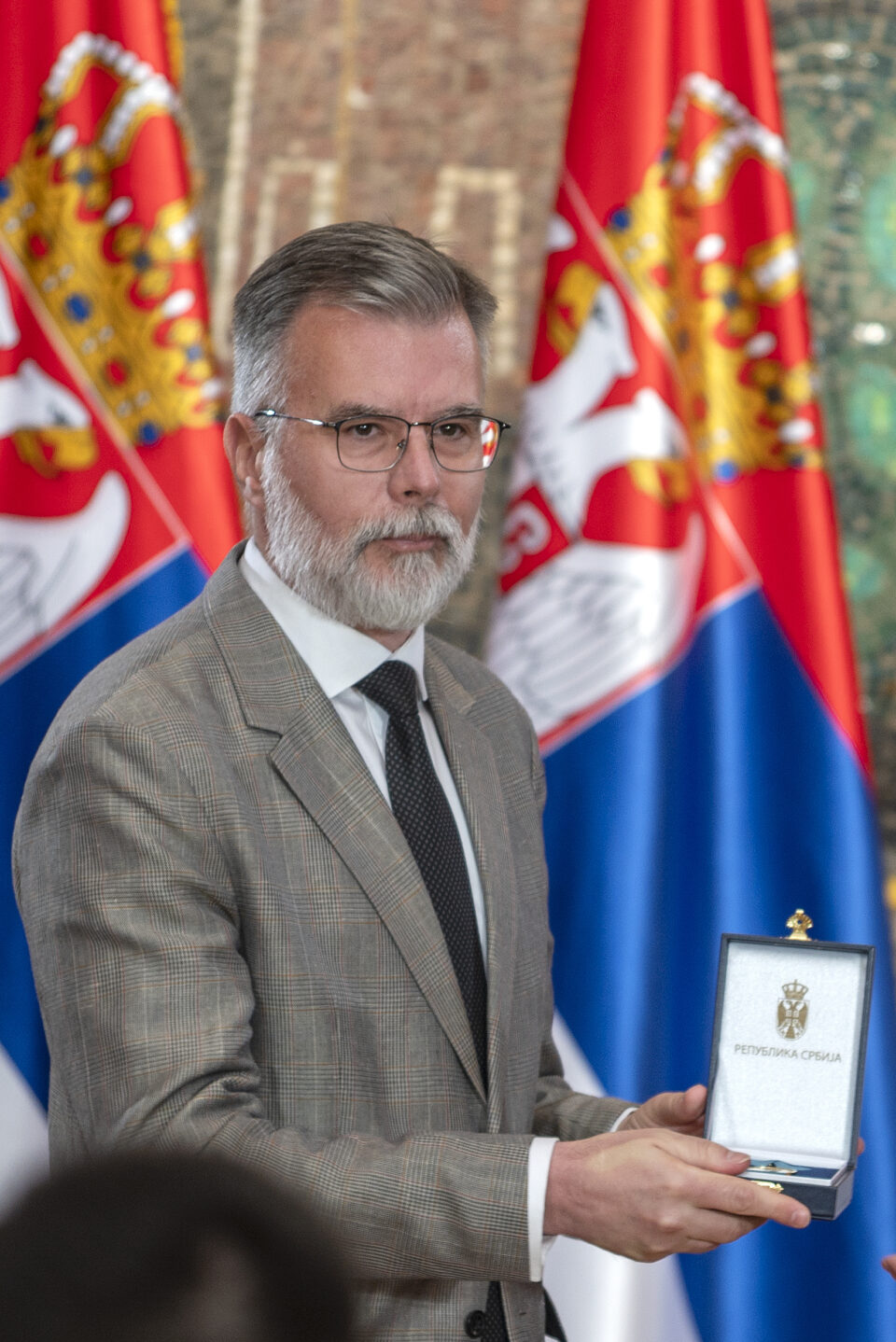The testimony of our suffering should be grounded in knowledge and devoid of any need for bad memories, hatred and revenge because minds that seek revenge destroy countries and those that strive for reconciliation create nations

We spoke with the Director of the Museum of Genocide Victims, Dejan Ristić, about the culture of remembering the victims and the struggle of the Serbian society and institutions to discover the truth and prevent it from falling into oblivion. In this interview, Mr. Ristić underlined the importance of nurturing the culture of remembrance and its exceptionally important identity, educational and civilizational function.
Does Serbian society understand the concept of genocide? As a nation, do we know what genocide is and are we aware that our people were also victims?
The tragic and painful historical experience of our people, unfortunately, recognizes genocide as the most brutal and dramatic form of war crime that is systematically perpetrated against members of a certain nation. In the period between 1941 and 1945, genocide was committed against Serbs on the entire territory of the Independent State of Croatia (NDH). This genocide encompassed a decades-long genesis, a terrible four-year manifestation and terrifying consequences that we feel even in our time, decades after. On the other hand, during the past few decades, but currently, we have witnessed several attempts to misuse the term genocide, which carries with it long-term very dangerous and potentially tragic consequences. The definition of the term genocide was given in 1944 by Raphael Lemkin and historical science does not deviate from that definition. Therefore, all decision-makers with a heightened awareness of responsibility for what is said and done must weigh very carefully the context in which the term genocide can be used. Everything else (un)conscious abuse of the context, which cannot bring anyone good. Bearing this in mind, the Museum systematically and professionally approaches the fulfilment of its numerous responsibilities related to the implementation of programmes related to culture, education, scientific research, art, publishing and information. This unique institution, not only in Serbia, but also in the whole of Southeast Europe, pays special attention to the continuous expansion of its abundant collections and funds, bearing in mind that this material is not exclusively museum-related, but above all, it is an unequivocal proof of the genocide committed by the Croatian state against the Serbs during World War II. At the same time, the challenges that the Museum faces on a daily basis are many and complex. First and foremost, I would like to single out with regret the devastating and tragic ignorance of the majority of Serbs about the genocide that their ancestors survived in the NDH. Serbs are insufficiently aware of their greatest trauma and tragedy which is this genocide. Due to the historical experience of being a victim of genocide, Serbs are one of those rare nations who experienced and survived genocide. Therefore, precisely those people must testify in a noble and dignified way to the whole world about what genocide is, what it entails, what are its consequences and why it must never happen to anyone. In parallel with this challenge, the Museum observes and opposes attempts to distort the past, which is reflected in the denial of the genocidal character, scope, systematicity and terrible consequences of the crime committed by the Croatian state against the Serbs during the Second World War.
Does the international community sufficiently recognize the genocide against Serbs in the NDH? Do we as a people know enough about it?
One gets the impression that we have condemned ourselves to historical oblivion, thus opening the door to falsification and relativization of what happened in those periods. There are few individuals, in our country as well as in the world, who show the necessary level of knowledge and awareness of the need to cultivate a culture of remembrance based on historical facts. In the institutional sense, the current situation is not much better either. Maybe your readers will get the impression that I am hypercritical, but if we bear in mind the increasingly frequent incidents that take place on many killing grounds from the Second World War and public monuments that bear witness to that period, the question arises whether we are allowed to turn our heads to the other side and remain silent on many cases of inappropriate and anti-civilizational behaviour of some of our irresponsible fellow citizens. It is justified to ask to what extent is our present based on ignorance or, at best, on insufficient knowledge of the most glorious or tragic periods of the national past from the previous century.
Serbs are one of those rare nations who experienced and survived genocide
Since its foundation, the Museum has been engaged in scientific research. What have you revealed to the public and what historically valuable documentation have you collected?
Since its establishment in 1992, museum experts and collaborators have published more than 150 monographic scientific publications and over 400 scientific papers. At the same time, our teams work daily to enrich the museum’s collections and funds, which currently number more than 200,000 items of historical material about the suffering of Serbs in World War II. If you add to that dozens of exhibitions, documentaries and documentary films, age-appropriate educational programmes, and strong cooperation with leading contemporary artists in the country and abroad, we can conclude that the Museum of Genocide Victims is one of the leading institutions of its type in the world.On the other hand, it would be very ungrateful to single out the most valuable among the several hundred thousand items of historical material stored in the Museum. However, in response to your question, I would like to note certain exceptional artefacts that we have at our disposal. The most significant material stored in the Museum is certainly the material related to the first state commemoration of the Kragujevac victims, organized by the Ministerial Council of the Kingdom of Yugoslavia on November 25, 1942, in London, the artwork of Serbian children rescued from Croatian death camps during the second half of 1942 thanks to the wonderful Diana Budisavljević who accommodated the children in the Institute for the Education of Deaf and Mute Children, based in Zagreb, a collection of original telegrams sent by the Ustashas, and Directive no. 25 by which Hitler ordered the attack on the Kingdom of Yugoslavia and on March 28, 1941. With its abundant collections and the diversity of its programmes, the Museum is one of the global centres of knowledge about the suffering of civilians in the Second World War.

Each victim has a name. Why is it important to identify each victim by name and how dangerous is the relativization of crimes by speculating on the number of victims?
The issue of the total determined or total estimated number of victims of a particular war crime, crime against humanity or genocide naturally generates public interest. This data represents one of the particularly important indicators of the character and essence of the specific crime. At the same time, it is extremely important to underline that the total current number of identified victims can by no means be the total estimated number of victims of the genocide committed against Serbs on the NDH’s territory. We can cite the total estimated number of victims of the genocide that was systematically and indescribably brutally carried out by the Croatian state against the Serbs during the Second World War if we comprehensively and objectively evaluate the facts of Yugoslav and Serbian historiography in connection with the investigation of the crime of genocide committed against members of our people on the territory of the entire Independent State of Croatia (NDH). If we point to the fact that during the period of socialist Yugoslavia, the attitude towards the victims of the genocide committed against the Serbian people in the NDH was ideological, selective and insufficiently objective, since our compatriots, victims of the Croatian Ustasha, were declared nameless “victims of fascism,” we have to analyse the results of Serbian historiography from the previous thirty years. It would be useful to see how many people wrote their doctoral thesis in our country in the past few decades on the suffering of members of our people in the NDH or which scientific and research projects were implemented. Knowing this could be devastating for all of us. Hence, on the analysis of scientific works, studies and monographs published under the auspices of Serbian historiography during the past few decades, we can conclude that they mostly failed to provide a complete and final judgment on the causes, course, scope, character and terrifying consequences of the genocide committed against the members of the Serbian people in the NDH.
With its abundant collections and the diversity of its programmes, the Museum is one of the global centres of knowledge about the suffering of civilians in the Second World War
Why does Serbian society not cherish the memory of its victims with more respect? We have numerous examples, one of which is the Novi Sad raid, which is always only briefly mentioned in the news.
We are under the impression that in our time, the historical phenomenon of the suffering of members of the Serbian people in the Second World War is being talked about to a much greater extent in the public space. That may be true, but experts, especially those gathered in and around the Museum, will stress with concern that the accentuation of this topic in the public space, unfortunately, is not accompanied by more scientific research, that is, systematic activities related to the culture of remembrance, education, art, culture and publishing. In other words, our country and our society immediately need to find a systematic and scientifically based definition of the basic principles of the culture and policy of remembrance, to which the team from the Museum of Genocide Victims can make a significant contribution. If someone believes that such an important topic that entails scientific research and public memorialization of Serbian victims of the Second World War can and should be the exclusive competence and responsibility of a small group of top experts gathered in this cultural institution of national importance, then we are in great danger of delegating the rights and the obligation of each of us, as members of the Serbian society, to know and remember, in order to relieve ourselves of a heavy, burdensome, and for some, “unwanted” memories.
The definition of the term genocide was given in 1944 by Raphael Lemkin
The Museum, the umbrella institution responsible for nurturing the culture of remembrance, continuously and strongly opposes such anachronistic, anti-civilizational and anti-democratic trends and will continue to do so even more in the time ahead. Modern Serbian generations have the right and obligation to remember their victims from the Second World War. No one can take that right away from them and no one can impose this obligation. Therefore, we need to re-arm ourselves with the knowledge and skills of knowing, analyzing and evaluating historical events, personalities and processes that largely shape our modern national identity. History gave the Serbs the task of witnessing the historical phenomenon of their own suffering in the Second World War. That testimony of our suffering should be grounded in knowledge and devoid of any need for bad memories, hatred and revenge because minds that seek revenge destroy countries and those that strive for reconciliation create nations.

Did the Museum launch interesting initiatives recently? What novelties will you show us in the coming period?
Our audience is used to the Museum revealing great discoveries, having many diverse programmes and being present and vigilant in the entire former Yugoslavia, but also beyond. We continue to search for historical materials and, in this sense, I will not speak in detail about the current activities, since I could jeopardize their expected results. However, the Serbian public will be able to see a large, new collection of historical materials soon, for which our Museum’s Foundation deserves special credit in terms of providing the necessary funds.
The International Holocaust Remembrance Day was marked at the end of January. What can we learn from the way Jews treat their victims and the international community’s attitude towards the Holocaust?
There is certainly a need, but also an obligation, to learn from many good examples internationally. However, this need should be based on the awareness of the necessity to enrich and objectify our knowledge, boost the democratic capacities of our entire society and show responsibility for our ancestors who suffered brutally during the Second World War. Therefore, we should facilitate work, knowledge, responsibility and piety, while not abusing the culture of remembrance for the sake of achieving personal goals and ambitions.
